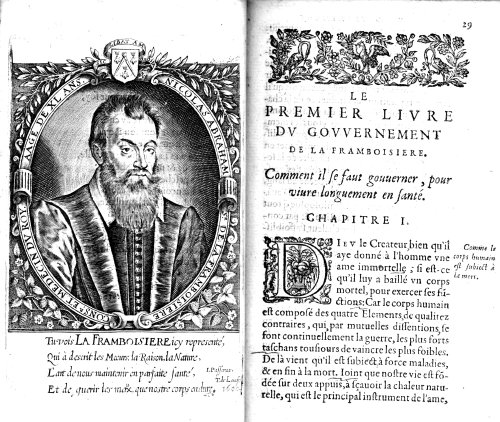La présence éventuelle d'une publicité ci-dessus est insérée par le routeur du mailing-liste indépendamment de mes choix en compensation de la gratuité de son service Dr O Walusinski baillement.com baillement.info yawning.info 

mercredi 1er septembre 2004 la lettre d'information du site baillement.com N°31 Si vous ne voyez pas les images, cliquez ici pour lire cette lettre dans votre navigateur. If you cannot see pictures below, to view the email in your web browser click here baillement.com est libre d'accès, base documentaire pour comprendre, chercher, travailler
La luxation de la machoireMercier J Rev Prat Méd Générale 1989; 3; 55 1997; 11; 389 Dislocation of the temporomandibular joint due to forceful yawning during induction with propofol Avidan A J Clin Anesth 2002; 14; 159 Injured temporomandibular joint associated with fluoxetine-monotherapy-induced repeated yawning Pae CU, JJ Kim et al General Hospital Psychiatry 2003; 25; 217-218 Hazard of yawning Tesfaye Y, Lal S Canadian Med Assoc J 1990; 142: 15 Hazard of yawning Tesfaye Y, Lal S Canadian Med Assoc J 1991; 145; 12; 1560 Integrated jaw and neck function in man. Studies of mandibular and head-neck movements during jaw opening-closing tasks Zafar H Swed Dent J 2000; Suppl 143; 1-41 or Zafar H, Eriksonn PO Arch oral Biology 2000; 45 ; 675-682 Temporomandibular disorders: a clinical update (pdf) George Dimitroulis BMJ 1998; 317; 190Ð194 Clinical TMD, pain related disability and psychological status of TMD patients Yap A, Cha E, Hoe K J Oral Rehabilitation 2002; 29; 374-380 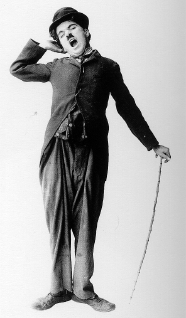
Integrated jaw and neck function in manYawning : first cause of temporomandibular luxation Do you have difficulty, pain or both when yawning ? A classic symptom in temporomandibular disorder ! - Jaw opening-closing, biting, chewing, swallowing, yawning and speech require unrestrained mandibular movements. Mandibular functions (speech, laughing, yawning, mastication,and taking a large bite) may be impaired if temporomandibular disorders exist. 5% of an adult population had felt pain when opening the mouth wide and 3% while yawning or chewing! Yawning stay for the fisrt cause of temporomandibulat luxation. See a testimony below. Nelaton's maneuver is the therapy.
- A functional linkage exists between the human temporomandibular and craniocervical regions. Head movements are an integral part of natural jaw opening-closing. "Functional jaw movements" comprise concomitant mandibular and head-neck movements which involve the temporomandibular, the atlanto-occipital and the cervical spine joints, caused by jointly activated jaw and neck muscles.
- Jaw and neck muscle actions are elicited and synchronised by neural commands in common for both the jaw and the neck motor systems. These commands are preprogrammed, particularly at fast speed. In the light of previous observations of concurrent jaw and head movements during foetal yawning, it is suggested that these motor programs are innate. Neural processes underlying integrated jaw and neck function are invariant both in short- and long-term perspectives. Integrated jaw and neck function seems to be crucial for maintaining optimal orientation of the gape in natural jaw function. Injury to the head-neck, leading to whiplash associated disorders may derange integrated jaw-neck motor control and compromise natural jaw function.
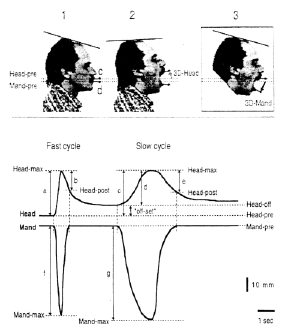
L'intégration de la moticité cervico-mandibulaire Le bâillement : première cause de luxation mandibulaire Avez-vous des difficultés, une douleur ou les deux quand vous bâillez ? Un symptôme classique de désordres de l'articulation temporo-mandibulaire ! - Ouvrir et fermer la bouche, goûter, mâcher, avaler, bâiller et parler requièrent des mouvements plus ou moins amples, sans gêne, de l'articulation temporo-maxillaire. Toutes ces fonctions (parler, rire, bâiller, mastiquer, prendre une grosse bouchée) peuvent être rendues difficiles par des désordres fonctionnels de cette articulation. 5% de la population adulte se plaint de douleurs lors de la complète ouverture de la bouche, et 3% au cours du bâillement ou du mâchonnement. Le bâillement est la première cause de luxation de l'articulation temporo-maxillaire. Voyez le témoignage ci-dessous. Découvrir la manoeuvre de réduction dite de Nélaton.
- Il existe un lien fonctionnel entre l'articulation temporo-maxillaire et la région cervicale. Les mouvements de la tête font partie intégrante du cycle ouverture/fermeture de la bouche. On définit "l'activité fonctionnelle mandibulaire" comme une association de mouvements concomitants de la nuque et de la machoire dans lesquels interviennent les articulations temporo-maxillaire, atloïdo-axoïdienne et des autres vertèbres cervicales, sous l'effet des muscles masséters et du cou.
- L'action des muscles masséters et cervicaux est synchronisée par une commande motrice nerveuse commune. Cette commande est quasi automatique surtout à vitesse rapide. A la lumière des observations échographiques, montrant l'existence de cette synchonie dès 12 semaines de grossesse, on peut considérer cet automatisme comme inné. Ces mécanismes neuro-moteurs intégrés sont très stables et ne varient pas au cours de la vie depuis la naissance jusqu'à un âge avancé. Ils semblent cruciaux pour maintenir une orientation optimale de l'ouverture de la bouche au cours de cette fonction naturelle. Les traumatismes du cou comme le "coup du lapin" peuvent perturber cette intégration motrice et compromettre la fonction buccale.

Jaw droppers Girish Vaidya consultant child and adolescent psychiatrist Marsden Street Clinic, Chesterfield BMJ 2004; 328; 520 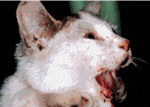
Temporomandibular luxation in cat La manoeuvre de Nélaton La luxation de la machoire Mercier J Rev Prat Méd Générale 1989; 3; 55 1997; 11; 389 Jaw Dislocation
Jaw droppers (testimony)- It was my first day at work as a house officer in a remote village in rural India. My supervising doctor had finished for the day and had gone home. I was about to leave when I was told that a "regular jaw dropper" had arrived. Curious to see who it was, I was greeted by an 80 year old man and his wife. The old man's mouth had refused to shut and was held wide open with some discomfort.Weird and wonderful differential diagnoses flashed through my mind, but, try as I might, I could not recall any major illness that had this sole symptom. In order to gain some time, I tried to discover more about the problem. The patient himself being unable to speak, his wife provided the history.
- Since he had lost all his teeth and his jaw bone had receded, the patient had found yawning satisfactorily to be dangerous. Every time he let out a fully fledged yawn, he could not shut his jaw again afterwards. My supervisor had, according to the wife, put his fingers in the patient's mouth, pulled the jaw outwards and forwards, and then let go. This had always solved the problem. "So that's it then," I thought with relief. It seemed to be a simple case of temporomandibular dislocation. Informing the old man and his wife that this was my first day as a doctor, I attempted to repeat the manoeuvre and was surprised when, with a click, the head of the mandible returned to its natural home, and my first "independent" patient was "cured." I thanked the couple for consenting to be treated by me and letting me gain valuable experience in the process. They in turn were pleased that I had been adventurous in treating them.
- Many months later, near the completion of my house officer training, I was working in a district general hospital in a medium sized town a few hundred miles from my rural posting in the remote village. It was a bright sunny morning with a longqueue of patients already formed at the entrance of the outpatients department. There was no luxury of booked appointments, and all those attending had lost a day's wages. I was met by a very distressed elderly woman accompanying an elderly man, who, although having tears streaming down his cheeks, had not managed to say much about his problem. The woman composed herself and told their story. The couple had spent the past two days trying to find a doctor in the town to cure the elderly man's problem. This had started when he had been very tired and had let out a full fledged yawn, when he discovered that he could not shut his mouth. No doctor had been able to advise them on what was wrong. I offered to set him right and, with a flourish, put my fingers in his mouth and relocated the dislocated mandible. Without any warning, the old man and another 10 people accompanying him rushed to touch my feet. In Indian tradition, this respect is accorded only to the elders in the family or community. The old man, now clearly able to speak, thanked me a million times for treating him, something that quite a few doctors in the town had been unable to do.
- I was left thinking that what we learn as medical students and doctors owes so much to the type of patient we see. Had I not seen that first, knowledgeable patient, I too would have been left wondering what the latter patient's problem was. Certainly, no such case had presented during my years at medical school. The other irony was that in India, where the best health care is confined to cities, my first patient had received prompt care in a remote village, whereas the second patient had had to endure two days of misery in a medium sized town.
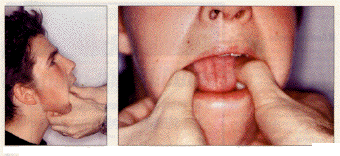
La mâchoire qui saute(témoignage) - Un soir en Inde. Je suis jeune médecin remplaçant et exerce seul pour la première fois dans une campagne reculée. Un couple de personnes agées arrive. L'homme, bouche grande ouverte, ne peut plus s'exprimer. Sa femme raconte qu'il est coutumier du fait. Depuis que ses dents sont tombées, lorsqu'il bâille sa machoire se décroche. Le médecin expérimenté que je remplace place ses mains dans la bouche et remet en place la machoire (Voir manoeuvre de Nélaton)
- Après avoir prévenu de mon inexpérience, j'applique la manoeuvre et ressent la claquement de la machoire qui reprend son lit.
- Quelques mois plus tard, à la fin de mon cursus de remplacements dans une ville moyenne, je vois dans la file d'attente d'un dispensaire, un vieil homme dans la même désagreable posture. Sa famille m'apprend qu'ils recherchent, en vain, depuis deux jours, un médecin capable de le soulager. Même manoeuvre, click ! Le voilà à nouveau capable de s'exprimer, de se répandre en mille remerciements. Dix autres se prosternent à mes pieds en signe de respect...
- Loin de ce que nous apprennent les études de médecine, l'imitation d'un médecin de campagne expérimenté, m'a permis de rapidement soulager un citadin, alors que, traditionnellement en Inde, la médecine de qualité est censée s'exercer en ville.
Nicolas Abrahamde La Framboisière Le gouvernement nécessaire à chacun pour vivre longuement en santé chez Michel Sonnius Ed rue St Jacques à l'Ecu de la Basle Paris 1601 Dieu le Créateur, bien qu'il aye donné à l'homme une ame immortelle, il est celui qu'il luy a baillé un corps mortel, pour exercer ses fonctions...
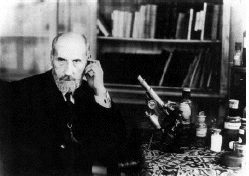
Ramón y Cajal Pedro Andres-Barquin Endeavour PDF 2001; 25; 1 The contribution of Santiago Ramon Y Cajal to functional neuroscience Rodolfo R. Llinás Nature Reviews Neuroscience 2003; 4; 77-80 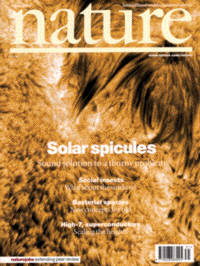
-
Santiago Ramón y Cajal : a century after the publication of his masterpiece 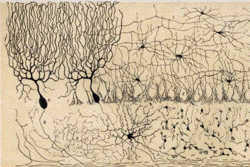
- In 1904, Santiago Ramón y Cajal (biography in english) published the third and last volume of his Histología del sistema nervioso del hombre y de los vertebrados, a grand work of 1.800 quarto pages and 887 large engravings. In it, he proved the individuality of neurons, untangled their interconnections with the central nervous system, and set the framework for modern neuroscience.
- Golgi and Cajal, who shared the Nobel Prize in 1906 for their studies on the nervous system, met only in Stockholm, to receive the award. Golgi gave his Nobel lecture first, in which he tied to his belief in "reticular" neural networks, which was entirely contradicted by Cajal's Nobel lecture. Cajal, a strenuous supporter of the contiguity (and not the continuity) of individual cells representing the basic units of the nervous system, fought for his ideas until his death.
Centenaire des travaux fondateurs de la neurophysiologie par Santiago Ramón y Cajal - En 1904, Santiago Ramon y Cajal (biographie en français) publie le troisième et dernier volume de son Histologie du sytème nerveux de l'homme et des vertébrés, un immense travail de 1800 pages avec 887 dessins et gravures en couleurs. Il y démontre l'individualité du neurone et décrit, de façon irréfutable, ses interconnexions avec la notion de synapse. Il pose ainsi les bases des neurosciences contemporaines.
- Santiago Ramon y Cajal partagea le prix Nobel, en 1906, avec C. Golgi. A cette époque sa contribution aux neurosciences était déjà considérable; certaines furent ignorées, méconnues et redécouvertes plusieurs dizaines d'années plus tard comme la plasticité neuronale, la régénération nerveuses etc... En réalité, la doctrine neuronale de Cajal ne fut réellement universellement acceptée qu'à près sa mort. Paradoxe, Golgi défendit la théorie réticulaire lors de sa leçon de prix Nobel. Cajal défendit, lui, sans fin sa théorie neuronale, jusqu'au bout de ses forces, sa dernière publication paraissant après son décès en 1934.
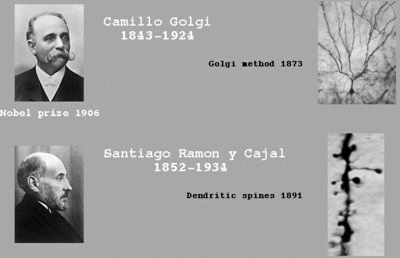
- 100 years after....at on other scale
- Crystal structure of the calcium pump with a bound ATP analogue
- Chikashi Toyoshima and Tatsuaki Mizutani
- Nature, 29 july 2004; 430; 6999; 529-535
- The publication of the crystal structure of Ca++-ATPase with a bound non-hydrolysable ATP homologue at 2.9 Å resolution marks the end of a chapter in structural biology. Now the structures of three major intermediates in the work cycle of this important calcium pump are known, and a detailed dissection of its mode of action is possible. The P-type ATP-powered pumps establish ion concentration gradients across cell and organelle membranes, so are central to many biological processes.
- 100 ans après...à une autre échelle
- Crystal structure of the calcium pump with a bound ATP analogue
- Chikashi Toyoshima and Tatsuaki Mizutani
- Nature, 29 july 2004; 430; 6999;
529-535
La publication de la structure moléculaire et tri-dimensionnelle de la pompe calcique membranaire à ATPase avec une liaison non-hydrolysable de 2.9 Å marque la fin d'un chapitre de biologie structurale. Sont maintenant connues les structures des trois sites majeurs des pompes calciques membranaires. Ces pompes à ATP établissent les gradients de concentration en Ca de part et d'autre des membranes cellulaires et des organites intra-cellulaires, base essentielle de multiples proccessus biologiques.
-
Autres documents mis en ligne ce mois-ci :
- Physiologie élémentaire de l'Homme Brachet JL 1855
- Leçons sur les maladies nerveuses E Brissaud 1895
- Avis aux gens de la campagne ou Traité des maladies les plus communes N Didelot 1772
- Dopamine receptors médiating yawning are they autoreceptors Serra G et al
- The effect of electroconvulsive shock seizures on behaviour induced by dopaminergic agonists and on immobility in the Porsolt test Zarrindast MR et al
- Adrenalectomy and dexamethasone replacement on yawning Anias-Calderon J et al
- De la physionomie et des mouvements d'expression P Gratiolet 1865
- Assessment of dopamine autoreceptor agonist properties of apomorphine, (+)3ppp and (-)3ppp by recording of yawning behaviour in rats Stahle L, Ungerstedt U
- Yawning and suppresssion of exploration induced by dopamine agonists: no relation to extracellular strital levels of dopamine Stahle L, Ungerstedt U
- Dissociation of autoreceptor activation and behavioral consequences of low doses apomorphine treatment Lynch MR
- Mouth of the devil
- YawningJH Petersen
- Femme dans sa chaise longue P. Picasso 1929
- Venus T. Alef 1925
- The yawn maneuver: prevention and treatment of postoperative pulmonary complications Bartlett RH et al
- Yawning and anxiety modulation R Shader
- Permissive role of D1 receptor stimulation by endogenous dopamine for the expression of postsynaptic D2 mediated behavioural responses Yawning in rats Longoni R et al
- New Scientist: The Big Yawn 19 Dec 98 (pdf)
- Illustrations de la thèse de Wolter Seuntjens
- Photos de bâillements tirées de la thèse de Wolter Seuntjens
- Le gorille de J. Vermeer
Résultats du sondageau 31 août 2004 Recherche par mot du site
-
Nombre de questionnaires remplis : 1 325 - Combien de fois bâillez-vous par jour ? <5 = 225,4%.. 5-10 = 25,4%.. 10-15 = 15,5%.. 15-20 = 8,8%.. >20 = 24,8%
- Ressentez-vous des baillements excessifs ?
- 71,2% = non, tant
mieux
27% = oui et je ne sais pas pouquoi - 7,1% = oui et je prends des antidépresseurs
- 1,3% = oui et je prends
des anti-épileptiques
4,7% = oui et je prends d'autres médicaments
2,7% = oui et j 'ai des troubles neurologiques
2,6% = oui et j 'ai des troubles hormonaux
3% = oui et j 'ai des tics moteurs
1,9 = oui et j 'ai des tocs - déclenchez-vous facilement le bâillement d'autrui ? 75,5%
- êtes-vous sensible au bâillement d'autrui ? 74%
- « L'imitation constitue une forme essentielle de transmission culturelle. Elle est porteuse de référence à l'autre comme agent. Associée à la reconnaissance d'être imité, elle est un mode efficace quoique transitoire de communication ».
- Jacqueline Nadel, Jean Decety
- Imiter pour découvrir l'humain
- PUF ed Paris 2002
baillement.com baillement.info yawning.info écrits et réalisés par le Dr Walusinski
Voici le nombre d'abonnés à cette lettre : courriel à adresser lire les lettres précédentes d'information du site
